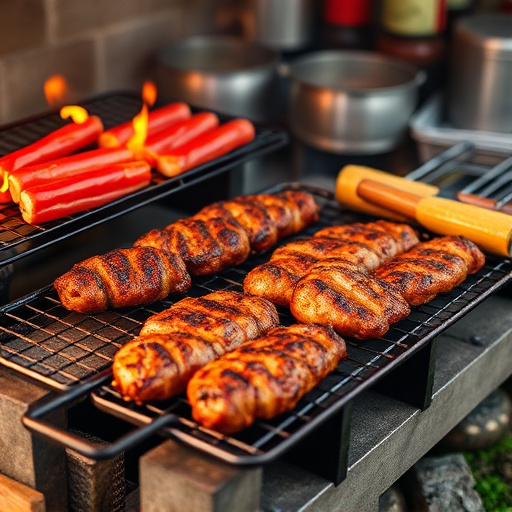Selecting the right lean cuts like round or sirloin and marinating in a blend of vinegar, soy sauce, brown sugar, garlic, paprika, peppercorns, and cumin is key to crafting an exceptional BBQ beef jerky recipe. Dehydrate the meat using a food dehydrator or oven method at low temps to achieve a perfect balance of chewy texture and vibrant BBQ flavor. Store properly in airtight containers for up to several months to ensure quality and safety.
Looking for a classic barbecue experience in a portable, chewy treat? This BBQ beef jerky recipe guides you through every step, from selecting the perfect cut of beef to mastering the art of drying. Discover how simple ingredients like ketchup, vinegar, brown sugar, and garlic powder transform into a flavorful marinade that makes your homemade jerky taste just like your favorite summer grill. Learn the best techniques for texture and storage tips to ensure your jerky stays fresh.
- Choosing the Right Cut of Beef for Jerky
- Classic Barbecue Marinade Ingredients and Their Role
- The Process of Making BBQ Beef Jerky
- Drying Techniques for Optimal Jerky Texture
- Storage and Shelf Life of Homemade BBQ Beef Jerky
Choosing the Right Cut of Beef for Jerky
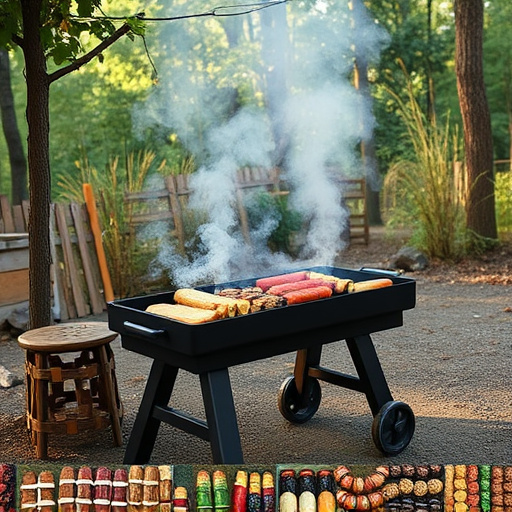
When crafting a BBQ beef jerky recipe, selecting the appropriate cut of meat is paramount to achieving that perfect balance of flavor and texture. Look for lean cuts like round or sirloin. These cuts contain less fat, which helps prevent the jerky from becoming overly greasy or oily after drying. Lean meat also ensures a more satisfying crunch with each bite, a desired trait in any BBQ beef jerky recipe.
Additionally, consider the marbling within the cut. Marbling refers to the distribution of fat throughout the muscle tissue, and a moderate amount can add richness to the flavor without compromising the jerky’s texture. Opting for a cut with just the right balance of lean protein and flavorful fat will result in a superior BBQ beef jerky recipe that truly satisfies your cravings.
Classic Barbecue Marinade Ingredients and Their Role
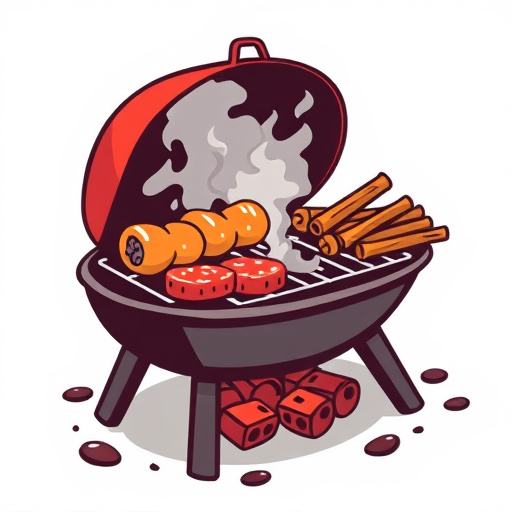
Classic Barbecue Marinade Ingredients and Their Role in a Delicious BBQ Beef Jerky Recipe
The heart of any great bbq beef jerky recipe lies in its marinade, a blend of flavors that penetrates deep into the meat, transforming it into a tender, mouthwatering snack. Traditional barbecue ingredients play a pivotal role in crafting this delicious treat. Ketchup, for instance, offers not just sweetness but also acidity, which helps to break down collagen and makes the jerky incredibly tender. Molasses adds depth of flavor with its rich, dark notes, while brown sugar contributes a caramelized sweetness that balances out the tanginess from vinegar or lemon juice.
Spices like paprika, garlic powder, and peppercorns bring heat and aroma, enhancing the overall profile. These ingredients not only season the meat but also act as natural preservatives, ensuring the jerky stays fresh longer. Mustard seeds and chili powder add a kick, while Worcestershire sauce lends a savory, umami note. Together, these classic barbecue marinade components create a symphony of flavors that make our bbq beef jerky recipe a true delight for any snack enthusiast.
The Process of Making BBQ Beef Jerky
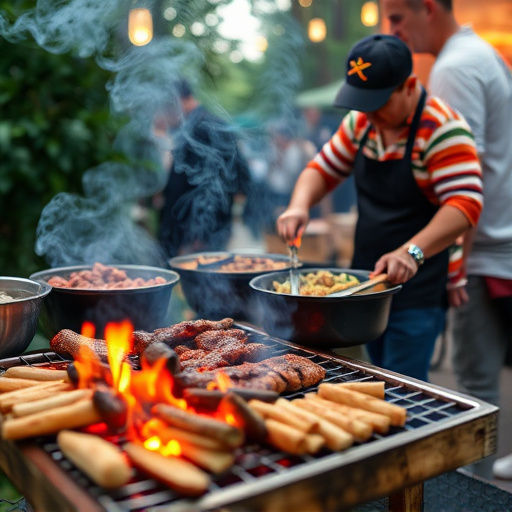
Making BBQ beef jerky at home is an art that combines precise cooking techniques with a blend of classic barbecue flavors. The process begins by selecting the right cut of beef, typically a lean slice like top round or sirloin. Once chosen, the meat is marinated in a flavorful mixture of ingredients commonly found in traditional BBQ sauces: vinegar, soy sauce, brown sugar, garlic, and spices such as paprika, peppercorns, and cumin. This step infuses the meat with moisture and a deep, smoky taste.
After marinating for several hours or even overnight, the beef is sliced thinly against the grain to ensure a tender end product. The slices are then lined on a dehydrator tray, allowing air circulation all around for even drying. A food dehydrator controls temperature and humidity, gently removing moisture from the meat over several hours until it reaches the ideal consistency—firm yet chewy, with a vibrant BBQ flavor that lingers on the palate.
Drying Techniques for Optimal Jerky Texture
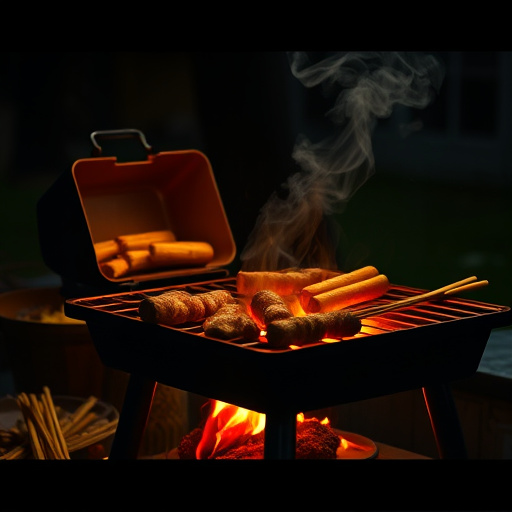
When crafting a classic BBQ beef jerky recipe, understanding drying techniques is paramount to achieving that perfect, chewy texture. The most common method involves using a dehydrator, which slowly reduces moisture content over several hours at low temperatures. This gentle approach ensures even drying, preserving the meat’s natural flavors and preventing it from becoming brittle or tough.
For those without a dehydrator, a simple oven method can be employed with careful monitoring. Preheat your oven to a low temperature—around 170°F (75°C)—and place sliced beef on a lined baking sheet, ensuring each slice is not touching. Dry the jerky for several hours, flipping occasionally, until it reaches your desired consistency. Remember, the key to optimal texture lies in patience and precise control of heat and humidity throughout the drying process.
Storage and Shelf Life of Homemade BBQ Beef Jerky
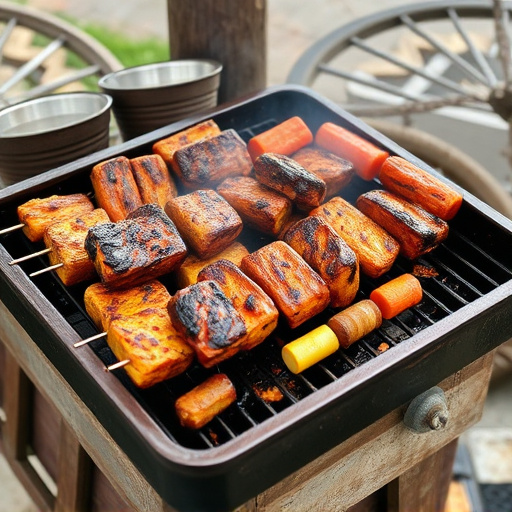
When making a homemade BBQ beef jerky recipe, understanding proper storage and shelf life is essential for maintaining its quality and safety. After air-drying your jerky to the desired level of dryness, store it in an airtight container or a resealable plastic bag. This helps preserve its flavor and texture by preventing exposure to moisture, oxygen, and other contaminants. Keep the container in a cool, dark place such as a pantry or refrigerator.
In ideal conditions, homemade BBQ beef jerky can last for several months. However, factors like temperature, humidity, and how it’s stored can affect this timeline. To maximize shelf life, avoid storing jerky in places with high heat or direct sunlight. Additionally, once opened, transfer the remaining jerky to a sealed container to maintain freshness. Always inspect for signs of spoilage before consuming, such as mold, an off odor, or a change in texture.
